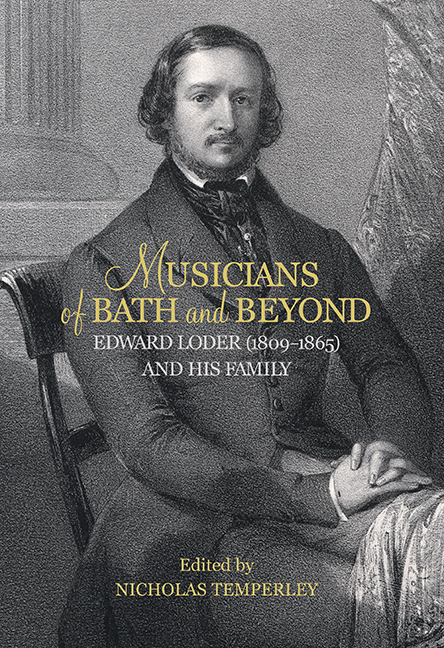Book contents
- Frontmatter
- Contents
- List of Illustrations
- Acknowledgments
- Notes on Contributors
- The Loder Family Tree
- Abbreviations
- Introduction
- PART ONE The Musical Profession in Early Nineteenth-Century England
- PART TWO The Loder Family
- PART THREE The Music of Edward Loder
- EPILOGUE The 1966 Revival of Raymond and Agnes
- Select Bibliography
- Index of Edward Loder’s compositions
- General Index
- Miscellaneous Endmatter
4 - The Climate for Opera in London, 1834–1865
Published online by Cambridge University Press: 04 June 2021
- Frontmatter
- Contents
- List of Illustrations
- Acknowledgments
- Notes on Contributors
- The Loder Family Tree
- Abbreviations
- Introduction
- PART ONE The Musical Profession in Early Nineteenth-Century England
- PART TWO The Loder Family
- PART THREE The Music of Edward Loder
- EPILOGUE The 1966 Revival of Raymond and Agnes
- Select Bibliography
- Index of Edward Loder’s compositions
- General Index
- Miscellaneous Endmatter
Summary
ON 21 July 1834, Edward Loder's opera Nourjahad opened at the English Opera House in London. Although Nourjahad was not as successful as John Barnett's Mountain Sylph, which premiered a few weeks later, the two operas caught the attention of both audiences and critics and ushered in a new genre of English romantic opera, which would continue to be cultivated and performed for over thirty years. Between 1834 and the genre's last premiere in 1865 over eighty new English operas were produced. Some of these operas remained a part of the operatic repertoire into the twentieth century. Few operagoers today have ever heard of works such as The Bohemian Girl, Maritana, or The Lily of Killarney. Nonetheless, during the Victorian era excerpts from these operas, as well as many others, were household tunes.
The operatic efforts of the first few decades of the nineteenth century were primarily plays with a handful of added musical numbers. On the other hand, English opera of the 1830s to 1860s offered a larger quantity of music and a greater synthesis of drama and music. The premiere of The Mountain Sylph, in particular, was greeted with surprise and enthusiasm by the press, who often remarked on the newness of this work. The hallmarks of English romantic opera included spoken dialogue, melodramatic plots, and a heterogeneous mix of international musical features (Italian scenas, with recitatives and bel canto, French-style choral scenes and orchestration, German harmonic complexity, and English ballads and glees). By the mid-1860s few composers chose to write this specific genre of opera, preferring the comic opera style that reached a high point with Gilbert and Sullivan, or operas on the Wagnerian model. Yet English operas continued to be a staple of touring companies in both Britain and the United States.
The climate for English romantic opera was a complex one, encompassing musical precedents and tastes, an opinionated press corps, and the economic and practical concerns of composers and impresarios. These three facets were often in conflict, placing librettists and composers in the difficult position of trying to please the often contradictory tastes of audiences and critics while still making a living. To all of this was added the cultural pressure of producing a truly national genre of opera when there had been so little English opera in the preceding decades.
- Type
- Chapter
- Information
- Publisher: Boydell & BrewerPrint publication year: 2016

